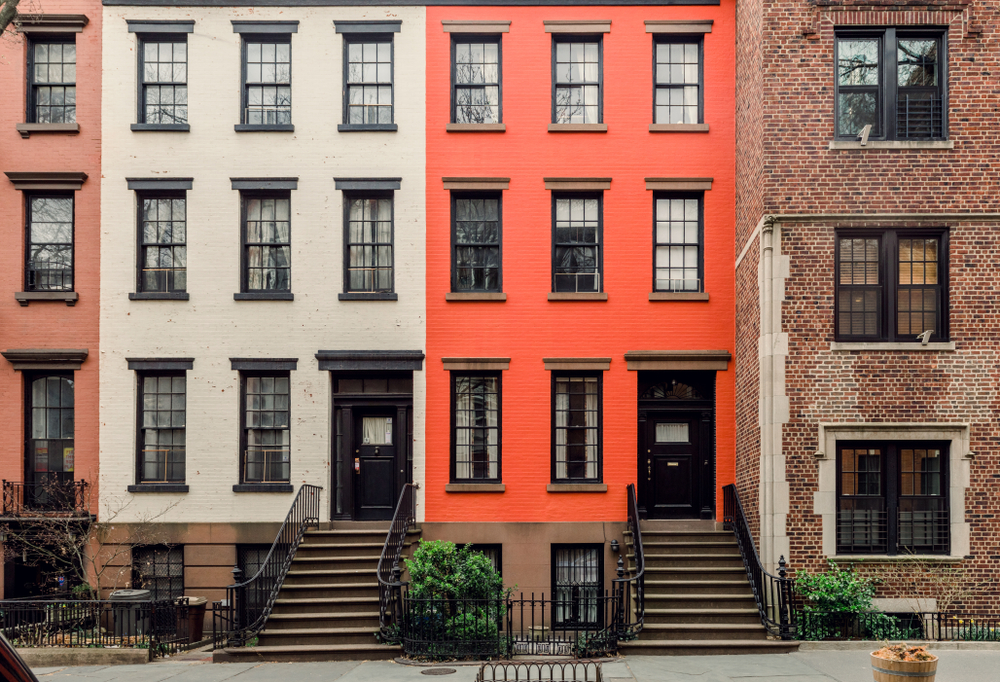Understanding the Importance of Brownstone Facade Restoration
Brownstone facades have long been a defining feature of the architectural landscape in cities like New York, where these iconic structures have graced neighborhoods for over a century. However, the inherent fragility of brownstone, a type of sandstone, means that regular maintenance and restoration are crucial to preserving their structural integrity and timeless aesthetic.
Brownstone facade restoration is a highly specialized process that requires a deep understanding of the material, historical preservation practices, and regulatory requirements. By undertaking a comprehensive restoration, homeowners and property managers can not only enhance the curb appeal of their buildings but also contribute to the preservation of a city’s architectural heritage.
The Anatomy of a Brownstone Facade
Brownstone is a sedimentary rock characterized by its warm, reddish-brown hue, which made it a popular choice for residential and commercial facades in the 19th century. This natural stone is prized for its aesthetic appeal, but its porous nature also makes it susceptible to weathering, erosion, and other forms of deterioration over time.
The typical brownstone facade consists of several layers, each serving a specific purpose:
- Original Brownstone: The outer layer of the facade, composed of the natural stone, which is responsible for the building’s distinctive appearance.
- Backing Material: A secondary layer, often made of brick or concrete, that provides structural support and stability for the facade.
- Mortar and Joints: The mortar that binds the individual stones together, as well as the spaces between them, play a crucial role in the facade’s overall integrity.
- Decorative Elements: Brownstone facades often feature intricate ornamental features, such as cornices, window surrounds, and other architectural details, which contribute to the building’s historical character.
Understanding the layered composition of a brownstone facade is essential for developing an effective restoration strategy that preserves the original materials and design while addressing any underlying structural issues.
The Brownstone Facade Restoration Process
Restoring a brownstone facade is a complex and meticulous undertaking that requires a multi-step approach. The process typically involves the following key stages:
1. Assessment and Documentation
The first step in the restoration process is a comprehensive assessment of the existing facade. This includes:
- Visual Inspection: Examining the facade for signs of damage, such as cracks, spalling, or erosion, to identify areas that require attention.
- Material Testing: Analyzing the condition and stability of the brownstone and mortar to determine the appropriate restoration techniques.
- Historical Research: Gathering information about the building’s history, original materials, and design, particularly for structures located in historic districts.
Thorough documentation of the facade’s existing condition is crucial, as it provides a baseline for the restoration work and ensures compliance with any regulatory requirements.
2. Regulatory Approval
In many cities, such as New York, brownstone buildings are often located within historic districts and are subject to strict preservation guidelines. Before any restoration work can begin, property owners must obtain approval from the relevant regulatory bodies, such as the Landmarks Preservation Commission (LPC).
The restoration plan must be submitted for review, detailing the proposed methods, materials, and colors to be used. Adhering to these regulatory requirements is essential to ensure the preservation of the building’s historic character and integrity.
3. Surface Preparation
Proper surface preparation is a critical step in the restoration process, as it lays the foundation for the successful application of new materials. This typically involves:
- Cleaning: Removing dirt, grime, and any previous coatings or paint from the existing brownstone using gentle, non-abrasive methods to avoid further damage.
- Repair and Patching: Addressing any cracks, spalling, or other forms of deterioration by carefully removing the damaged areas and filling them with compatible cementitious materials.
- Reinforcement: In some cases, the underlying structure may require reinforcement, such as the installation of metal anchors or mesh, to provide additional stability.
The goal of this stage is to create a sound, stable surface that will effectively support the new restoration materials.
4. Layered Restoration
The actual restoration of the brownstone facade typically involves the application of multiple layers of specialized materials, each serving a specific purpose:
- Slurry Coat: A thin, penetrating layer that fills the porous structure of the existing brownstone, providing a strong bond for the subsequent coats.
- Scratch Coat: A thicker, grooved layer that creates a textured surface to improve the adhesion of the final brownstone coat.
- Final Brownstone Coat: The top layer, carefully matched to the original stone in terms of color, texture, and appearance, often applied by hand to replicate intricate details.
Each layer must be approved by the relevant regulatory bodies, such as the LPC, to ensure compliance with preservation standards.
5. Curing and Finishing
After the final brownstone coat has been applied, it must be allowed to cure for several weeks to ensure its durability and long-term performance. During this time, any necessary finishing touches, such as the restoration of decorative elements or the application of protective sealants, are completed.
The final result is a brownstone facade that not only looks visually stunning but also has the structural integrity to withstand the test of time.
Costs of Brownstone Facade Restoration
The cost of brownstone facade restoration can vary significantly, depending on a range of factors. Some of the key elements that influence the overall project budget include:
- Extent of Damage: The more extensive the deterioration of the existing facade, the more labor and materials will be required, leading to higher costs.
- Size of the Building: Larger brownstone buildings naturally incur higher restoration expenses due to the increased scale of the project.
- Quality of Materials: The use of high-quality, historically accurate materials, while more expensive, is essential for preserving the facade’s integrity and authenticity.
- Regulatory Compliance: Adhering to the guidelines and requirements set forth by regulatory bodies, such as the LPC, can add to the overall project costs.
- Contractor Expertise: Engaging experienced professionals in the field of historic preservation can come at a premium, but it helps to ensure the success of the restoration project and prevent costly mistakes.
On average, the cost of brownstone facade restoration can range from $50,000 to $200,000, depending on the specific factors mentioned above. While this investment may seem substantial, it is crucial to recognize the long-term benefits of preserving these iconic structures.
The Benefits of Brownstone Facade Restoration
Investing in the restoration of a brownstone facade yields a range of benefits, both for the property owner and the broader community:
Preserving Architectural Heritage
Brownstone facades are a vital component of the architectural identity of many cities, particularly in areas like New York City, where these structures have been a defining feature for over a century. By restoring and maintaining these facades, property owners are contributing to the preservation of the city’s historical character and cultural legacy.
Enhancing Property Value
A well-executed brownstone facade restoration can significantly increase the market value of a property. Prospective buyers often place a premium on buildings with well-maintained, historically accurate facades, recognizing the investment and effort required to achieve this level of restoration.
Improving Curb Appeal and Neighborhood Aesthetics
A beautifully restored brownstone facade can dramatically enhance the curb appeal of a building, adding to the overall aesthetic of the surrounding neighborhood. This, in turn, can contribute to increased property values and a more vibrant, desirable community.
Ensuring Structural Integrity
Brownstone is a porous material that is susceptible to weathering and deterioration over time. Proper restoration techniques, such as the application of protective coatings and reinforcement of the underlying structure, can help to ensure the long-term structural integrity of the facade, preventing more costly repairs in the future.
Promoting Sustainability
By preserving and restoring existing brownstone facades, property owners are contributing to the sustainability of their communities. Rather than demolishing and replacing these historic structures, restoration efforts help to reduce waste and conserve the embodied energy and resources invested in the original construction.
Navigating the Regulatory Landscape
Brownstone facades, particularly those located in historic districts, are subject to strict regulatory requirements and oversight. Property owners must navigate a complex landscape of preservation guidelines and approval processes to ensure the success of their restoration projects.
In New York City, for example, the Landmarks Preservation Commission (LPC) is the primary regulatory body responsible for overseeing the restoration of buildings within designated historic districts. Property owners must submit detailed restoration plans for review and approval, ensuring that the proposed methods, materials, and colors are in keeping with the building’s historical character.
Failure to comply with these regulations can result in significant delays, fines, and the potential requirement to undo or modify restoration work that does not meet the LPC’s standards. As such, it is crucial for property owners to engage experienced professionals who are well-versed in historic preservation practices and the specific regulatory requirements of their local jurisdiction.
Choosing the Right Brownstone Facade Restoration Contractor
Selecting the appropriate contractor for a brownstone facade restoration project is a critical decision that can have a significant impact on the success and cost-effectiveness of the endeavor. When evaluating potential contractors, property owners should consider the following key factors:
- Expertise in Historic Preservation: Look for contractors with a proven track record of successfully restoring brownstone and other historic facades, as this specialized knowledge is essential for navigating the complexities of the restoration process.
- Understanding of Regulatory Requirements: The contractor should be well-versed in the local preservation guidelines and approval processes, ensuring compliance throughout the project.
- Use of Appropriate Materials: Confirm that the contractor will use high-quality, historically accurate materials that are compatible with the existing brownstone and designed to withstand the elements.
- Attention to Detail: Brownstone restoration requires a meticulous approach, with a focus on replicating the original features and textures. The contractor should demonstrate a commitment to craftsmanship and attention to detail.
- Project Management Capabilities: Restoring a brownstone facade is a multi-step process that requires careful coordination and project management to ensure the timely completion of the work.
- References and Portfolio: Request references from previous clients and review the contractor’s portfolio to gauge their level of expertise and the quality of their past work.
By carefully vetting potential contractors and selecting a partner with the necessary experience and expertise, property owners can increase the likelihood of a successful brownstone facade restoration project that preserves the building’s historic character and enhances its long-term value.
Conclusion
Brownstone facade restoration is a crucial undertaking for preserving the architectural heritage and vibrant character of cities like New York. By understanding the complexities of the restoration process, the associated costs, and the importance of navigating the regulatory landscape, property owners can make informed decisions that contribute to the sustainability and desirability of their communities.
Engaging experienced professionals who specialize in historic preservation is essential for ensuring the success of a brownstone facade restoration project. With the right approach and attention to detail, property owners can transform their buildings, enhancing their curb appeal, increasing their market value, and safeguarding the timeless charm of these iconic structures for generations to come.


Leave a Reply